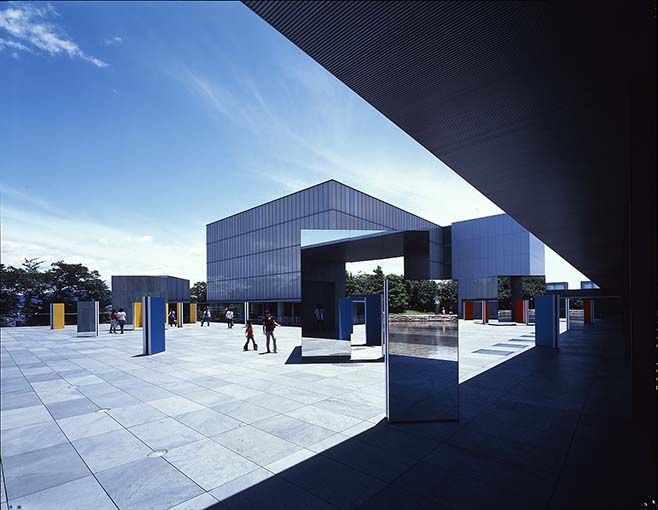
The insides of these three small cabins are variously painted in red, yellow, and blue, and mirrors have been attached to the exteriors. When walking around them the viewer sees not only the primary colors, but also the surrounding scenery at the same time. This could include museum buildings, their interiors, or the greenery of a garden. A kind of “escape hatch” has been installed at the four compass points of each cabin which, like the mirrors, allows things to enter and leave the structures from both inside and outside. Since the late 1960s the artist, Daniel Buren, has been displaying artworks not only inside museums but also outside in urban areas. Buren created this work specifically for the Toyota Municipal Museum of Art. Incorporating the regularity of the architectural design of Yoshio Taniguchi, Buren combines both interior and exterior to give rise to a fresh spatial experience.
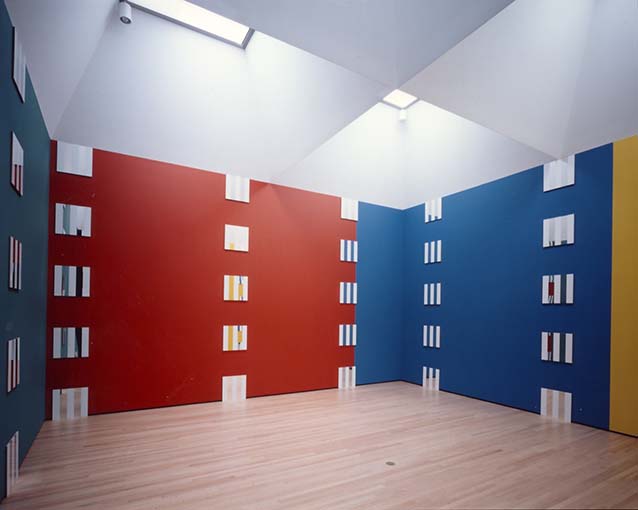
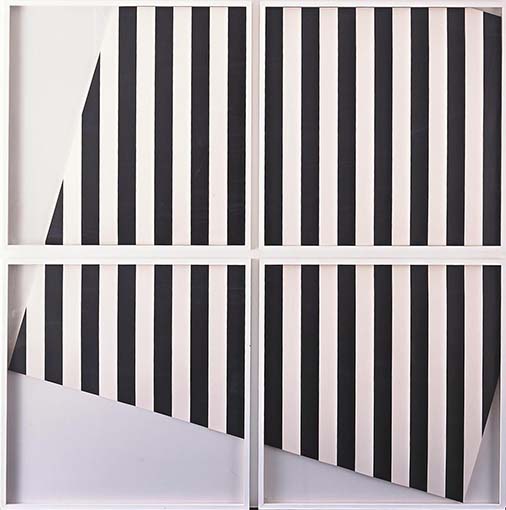
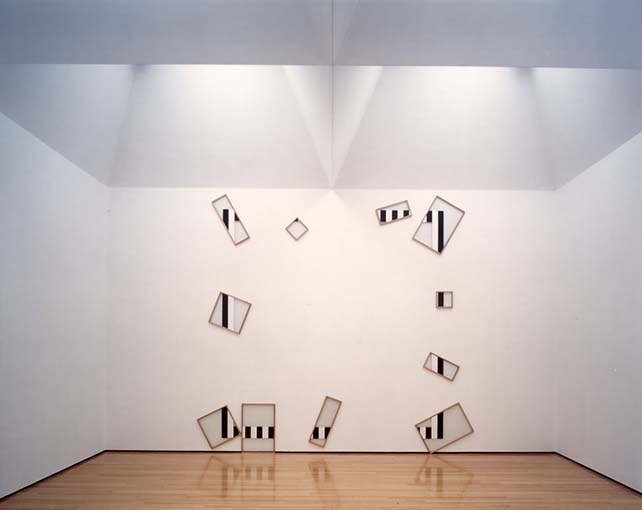
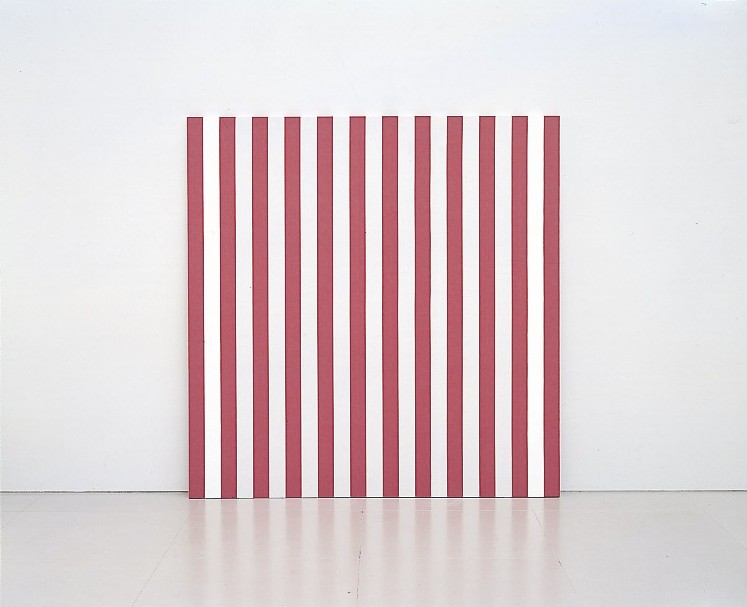
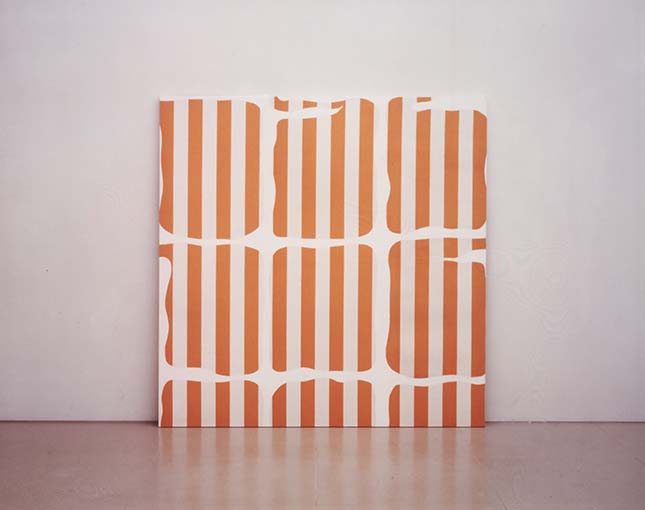
[Audio Guide]
These 8.7cm-wide stripes are not indicators of meaning so much as markers that draw attention to the space or place where the work is displayed. Daniel Buren noticed that stripes functioned to attract the eyes, and incorporated them into his works. In the late 1960s, he pasted stripes of fabric or paper of uniform width on bulletin boards or walls on the streets, seeking to expand visual presentation beyond museums to the spaces where people lead their everyday lives. In this work, white acrylic describes amorphous forms amid the stripes. It is intended to rest on the floor and lean against the wall rather than hanging. This “painting of variable forms” both is and is not a painting, acting on the museum space in a “variable” way.